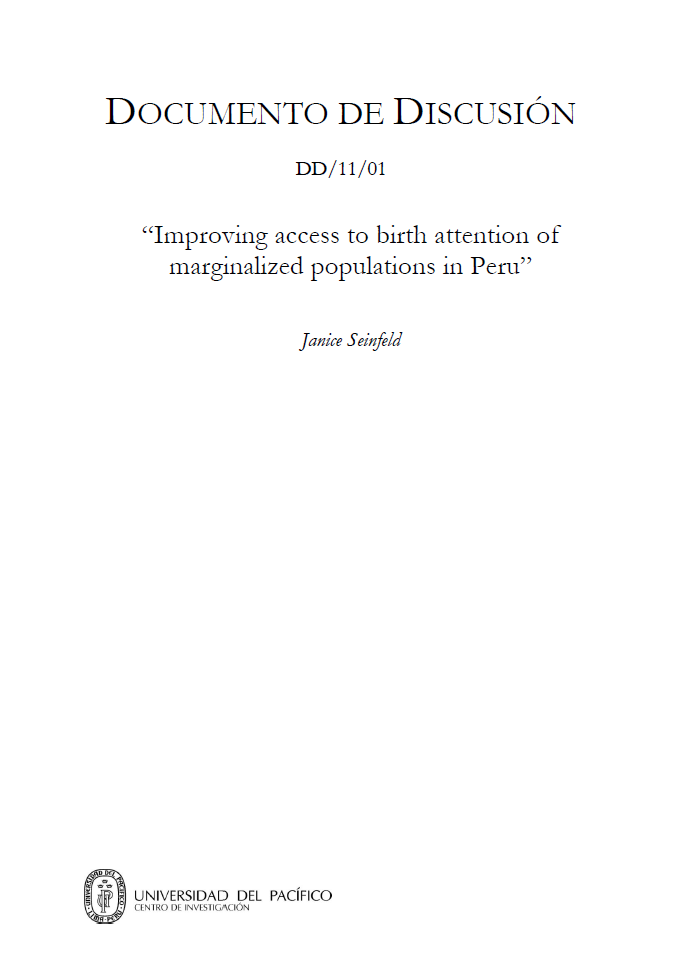Improving access to birth attention of marginalized populations in Peru
Abstract
In the last 15 years, maternal mortality rates have been significantly reduced in Peru. In 1996, this rate was as high as 31.6 per 100,000 women while in 2009 it was reduced to 8.5 per 100,000 women. These improvements, although significant, were neither enough —Peru is still well behind developed countries rates— nor solved inequality problems across different groups and areas, especially for poor women living in the Selva region and in rural areas. Strategies to reduce economic, accessibility and cultural barriers are necessary to increase institutional deliveries’ rate, and thus reduce maternal mortality. Although information on maternal mortality is scarce, we rely on the strong correlation between this variable and institutional delivery in Peru to analyze the factors contributing to maternal mortality. Internationally, institutional delivery has been found as good predictor of maternal mortality by several authors. Institutional delivery has increased significantly in the last decade —from less than 50 per cent in 2000 to 80 per cent in 2009—, but great inequalities still marginalize different groups in the country. Women living in rural areas, the Selva region, poor and uneducated women have lower institutional delivery rates than the rest of the population. Even though the government has recently implemented a strategic program to address maternal and neonatal health, with the main objective of reducing maternal mortality, evaluations suggest improvements could be made. Thus, important policy recommendations, coming from the analysis on the barriers to access institutional deliveries, are presented: • A conditional cash transfer system to promote institutional deliveries could be implemented. Our estimates prove income level is an important variable determining institutional delivery and international experiences suggest conditional cash transfer are a good alternative to reduce economic barriers to access institutional delivery. • Cultural adequacy of the delivery —stand up delivery, capability of burying the placenta, admitting presence of relatives during delivery, among others— could be widened to increase willingness of different cultural and ethnic groups to attend health facilities for delivery. • Presence of low level health establishments does not increase the statistical probability of institutional deliveries, although these are the most common health establishments available in poor, rural areas. Investment to increase their resolute level is crucial.

